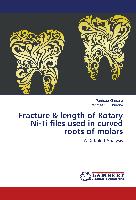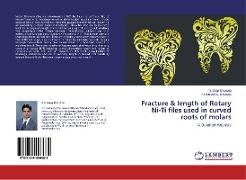Fracture & length of Rotary Ni-Ti files used in curved roots of molars
BücherAngebote / Angebote:
Nickel Titanium alloy was developed in 1963 by Bhuler et al.The ability of Nickel-Titanium to undergo extensive deformation resulting from a stress assisted phase transformation, with the reverse transformation occurring on unloading is called Super elasticity.Ni-Ti files also have ability to revert back to its original straight form without any sign of lasting deformation, this property is called 'Shape memory'. Nevertheless, without any prior notice, a fracture can occur suddenly. Fracture of Ni-Ti files is main concern regarding there clinical use. Fracture of rotary instruments takes place in two different ways, due to torsion or ductility and due to cyclic fatigue through flexure.Ni-Ti rotary files causes small but consistent change in working length.There are number of factors associated with distortion and fracture of rotary Ni-Ti including speed of rotation, angle and radius of curvature of root. This aim of research in this book is evaluation of breakage, distortion and loss of working length in curved root canals by using different Nickel-Titanium rotary endodontic instruments.
Folgt in ca. 10 Arbeitstagen

